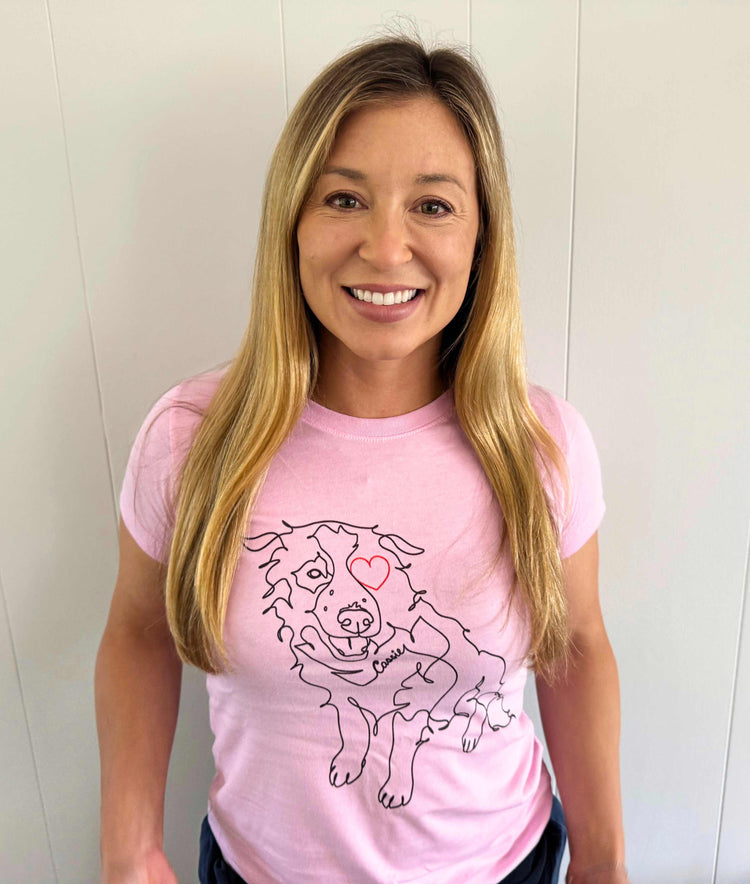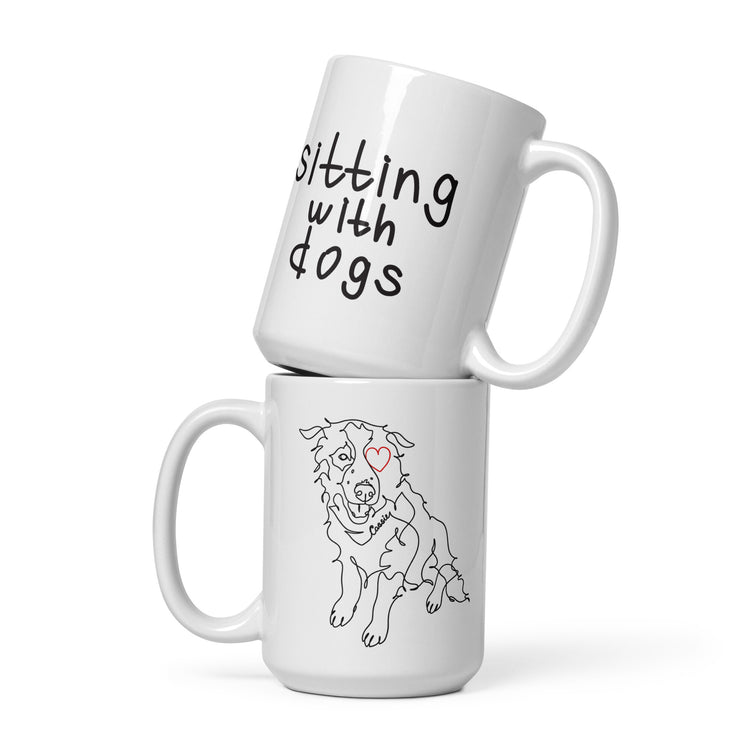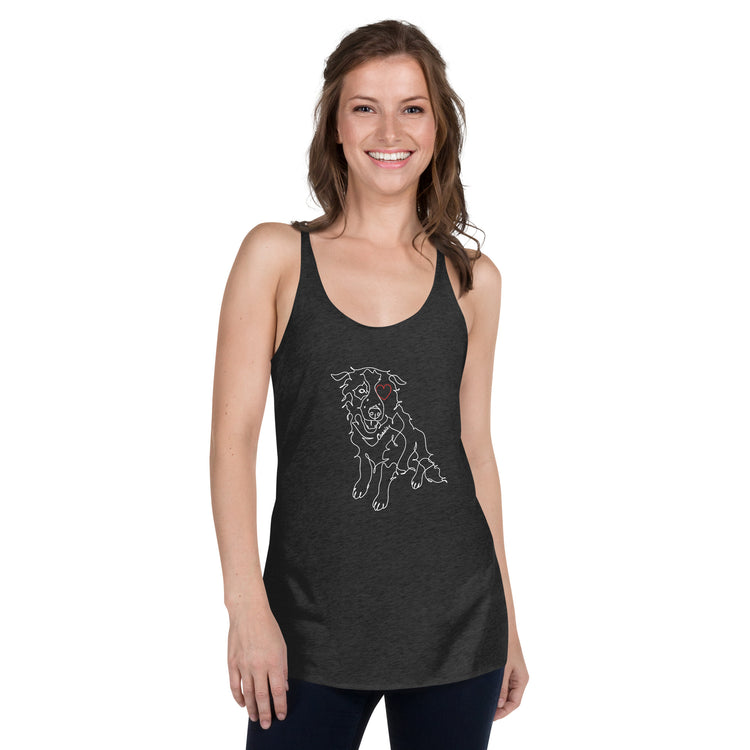Terrified Rescue Dog Won’t Let Anyone Touch Him, HERE’S Why!
When I first walked past his kennel, I couldn’t even see him. Just a tight little ball of fluff wedged in the corner, frozen. That’s when I heard the staff say, “His name is Monster.” And look—Monster might sound like a cute nickname, but for this pup, it just didn’t sit right. He wasn’t a monster. He was scared. He was silent. He was lost.
That’s what Sitting With Dogs is all about—meeting them where they are and helping them find their way back.
His World Fell Apart
Monster’s story starts with an eviction. His family was going through a hard time, and the stress of losing their home escalated tension in the house. At one point, there was a scuffle between Monster and another dog in the home—over food. It was a single traumatic moment, but one that changed everything for him.

After that, Monster wasn’t the same. He became fearful, withdrawn. His family, feeling overwhelmed and heartbroken, brought him to the shelter. They cried as they surrendered him, even voicing concern that he might not be able to go on without them. They worried euthanasia might be the kindest option.
Thankfully, the shelter staff stepped in and said, “Not so fast. Let’s give him a chance.”
The Look of Trauma
You might have mistaken his panting for a smile, but it wasn’t. His wide eyes, his stiff body language—this was a textbook case of fear. And not just your average nervousness. I’m talking about fawn response: the dog equivalent of people-pleasing taken to the extreme. It’s a lesser-known trauma response, and it’s one that often goes misread. When a dog rolls over and shows their belly, it doesn’t always mean they want a rub. Sometimes it means they’re begging you not to hurt them.
And that was Monster.
Building Trust—One Treat at a Time
At first, Monster wouldn’t let anyone touch him. Not me, not the shelter staff, not even during his health check. But I’ve learned something important about fearful dogs over the years: movement creates opportunity. If they’re willing to move—even a little bit—they’re not frozen anymore. That’s the moment to start building a bridge.

So I did what I do best. I sat down and offered a treat.
He took it.
Then another. And eventually, he even took one from my open palm. It might not sound like much, but when you’re trying to earn the trust of a dog who’s been through trauma, that’s a major breakthrough.
What the Groom Revealed
I knew we needed to go slow. That’s why I asked Mel, the amazing shelter groomer at Animal Friends of the Valleys, if she’d work her magic.

Mel is incredibly patient—good thing too, because Monster was still scared. He was so nervous that when they finally got him onto the grooming table, he had an accident. But Mel didn’t flinch. She cleaned him up and moved forward with compassion.
And here’s where things got real. As Mel washed him, she discovered that the dirt we saw on his back end wasn’t just grime. It was covering up wounds. Untreated, crusted, and likely painful. No wonder he didn’t want to be touched. This poor guy was carrying physical pain on top of his emotional trauma.
The matting, the filth, the stress—he didn’t just look like he had lived in a dumpster, he felt like it, too. But under that coat was something beautiful. With every clip and scrub, a new version of Monster started to emerge. He wasn’t hiding anymore. He was trying.
Should We Rename Him?
Let’s talk about the name. “Monster” might’ve once been meant playfully, but it just didn’t match the soul inside this dog. He needed a name that carried light, not baggage.

That’s why I’m putting it to you—should we change his name to Sunny?
There’s something symbolic about it. A dog once lost in darkness getting a name that means light. I believe names have power, and I want this dog to feel worthy of love and hope. But we’re leaving it up to the community. Monster or Sunny? You tell us.
Training Tips for Fearful Dogs
Working with dogs like Monster—whether you call him Monster, Sunny, or Cowboy—takes patience and a soft touch. If you’re considering adopting a pup like him, here are some tips:
- Let the dog come to you. Don’t rush affection. Let them sniff, retreat, and observe until they’re ready.
- Use high-value treats. Soft, stinky treats (think cheese or liver) help build positive associations with people.
- Respect their body language. Lip licking, yawning, whale eyes, and frozen postures are all signs to slow down.
- Create safe zones. Whether it’s a crate or a quiet room, give them a place they can retreat to and decompress.
- Be prepared for the long haul. Some dogs need weeks, even months, to come out of their shell. That doesn’t make them broken—it makes them survivors.
The Scoop
Monster’s favorite treats? Turns out he’s got a soft spot for the same ones I use on Flip’s Farm—cheese bites and peanut butter bones. That love of food may just be our strongest connection right now.

And after that medicated bath and full grooming session, I think he felt a little relief. Maybe even a flicker of hope.
Next Steps
Monster is currently safe at Animal Friends of the Valleys, but he’s still waiting for the right person to help him heal. A rescue may be in the wings, but nothing’s confirmed yet. If you can’t adopt, please share his story. Because every share is a chance to find the one person he’s waiting for—the person who sees his pain and says, “I’ve got you now.”
I’ll be checking back on Monster. And whether his name changes or not, I’ll never forget that quiet moment we shared when he took a treat from my hand. Because in that second, he wasn’t scared.
He was brave.
Want to help dogs like Monster? Support by watching, sharing, and shopping Flip Coffee—because every cup helps a pup. And don’t forget to check out the PupDates playlist for updates on dogs just like him.



